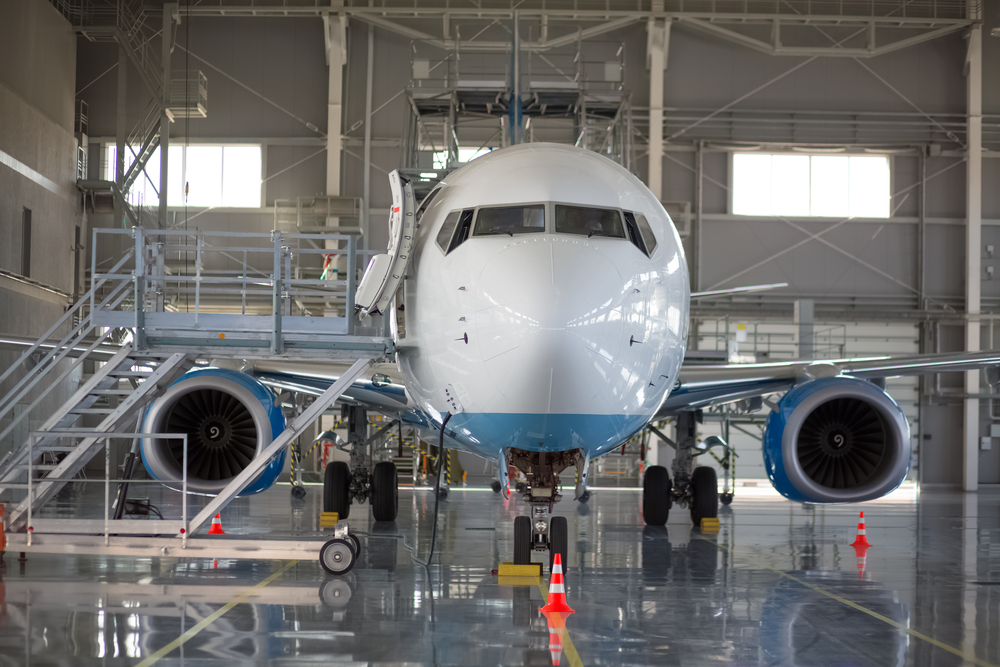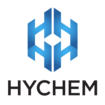Designed to withstand 369 tonnes

Aircraft hangar floors are subject to a number of harsh conditions that can cause damage and deterioration if they are not sealed. It is important to prevent this from happening as hangars are a vital part of airport infrastructure required to store, repair and maintain aircraft.
One of the key characteristics of a hangar is a large, unbroken floor area made from concrete. However, due to the rapid advance of aviation technology, unsealed concrete floors are unable to withstand the heavy equipment and chemicals they are subject to without damage.
It is important that damage does not occur as it affects the on-site safety and operational capacity of a hangar, lowers its value and causes costly repairs.
According to Chris Bauer, Head of Flooring at Hychem, choosing an appropriate epoxy resin will help to ensure the longevity of an aircraft hangar floor.
“There are a number of factors that need to be taken into account when selecting a coating for an aircraft hangar, so it is important to ensure the product you choose is suitable for your application,” Mr Bauer said.
“Hychem’s SF20 and Polyac PMMA products have both had success in providing a long-lasting coating system for hangars. As they are both customisable, we are able to adapt the products to suit the needs of individual projects.”
Heavy loads
Aircraft hangar flooring needs to be impact resistant and able to handle heavy loads. With the largest commercial aircraft, Airbus A380, weighing in at 369 tonnes maximum zero fuel weight (total weight of the airplane and all its contents, including unusable fuel), flooring solutions need to have a strong bond and tensile strength as well as flexibility.
While the coating needs to be strong enough to take the weight of aircraft, it also needs to be impact and abrasion resistant. Staff working in the hangar could drop heavy tools and equipment so the coating needs good compressive strength and impact resistance to prevent it from being scratched, cracked and withstand other damage.
“SF20 performs well in harsh and punishing environments such as aircraft hangars. It is highly wear resistant and provides a 500 micron DFT after the application of two coats,” Mr Bauer said.
“Polyac PMMA is also suitable for areas with heavy traffic that require the floor coating to be highly durable. It can be customised to improve its impact resistance and prevent damage from falling objects.”
Stain and chemical resistance
There are a number of fluids such as aviation fuels, fire resistant hydraulic fluids, lubricants and heavy-duty cleaning fluids which can cause deterioration to unprotected concrete.
“Choosing products, such as SF20 or Polyac PMMA, which have good short and long exposure resistance to the numerous chemicals found in hangars, will prevent them from eating into unprotected or unsuitably sealed concrete which causes the floor to become porous and flaky,” Mr Bauer said.
“If the concrete or coating deteriorates the floor becomes hard to clean, allowing chemicals to build up in the spaces and causing further deterioration or staining.”
Slip resistance and easy maintenance
Aircraft hangars can get a lot of foot traffic, so it is important that floors are slip resistant to help prevent accidents, especially in maintenance areas where fluid is often spilled on the ground.
“Both SP20 and Polyac PMMA meet Australian occupational health and safety requirements, including good slip resistance. Slip resistance levels for SP20 can also be be customised to meet an R10-R13 rating,” Mr Bauer said.
Easy cleaning and maintenance is also a consideration, especially for large hangars, as it needs to be quick and simple to maintain.
Colour selection
Being able to customise the final finish of the floor is also important, as a light colour will allow for high visibility of items that have been left on the floor and any fluids that have been spilled.
“Both SF20 and Polyac PMMA are available in a variety of colours, from light to dark, to meet the needs of the project,” Mr Bauer said.
“We are also able to use a brighter colour on top of the base colour to clearly mark walkways and boundaries that need to be kept clear, as well as emergency paths.
“This will not only protect the floor from damage but improve the safety and aesthetics of the floor.”
Climate conditions
According to Mr Bauer another important factor to be taken into consideration is the climate of the hangar location.
“Climate not only affects the application process but it can also affect the finished product. For example, in hot climates UV exposure can cause discolouration.
“Our products, including SF20 and Polyac PMMA, are suitable for the different climatic conditions found across Australia, and have consistent performance in temperatures ranging from 10°C to 40°C.”
